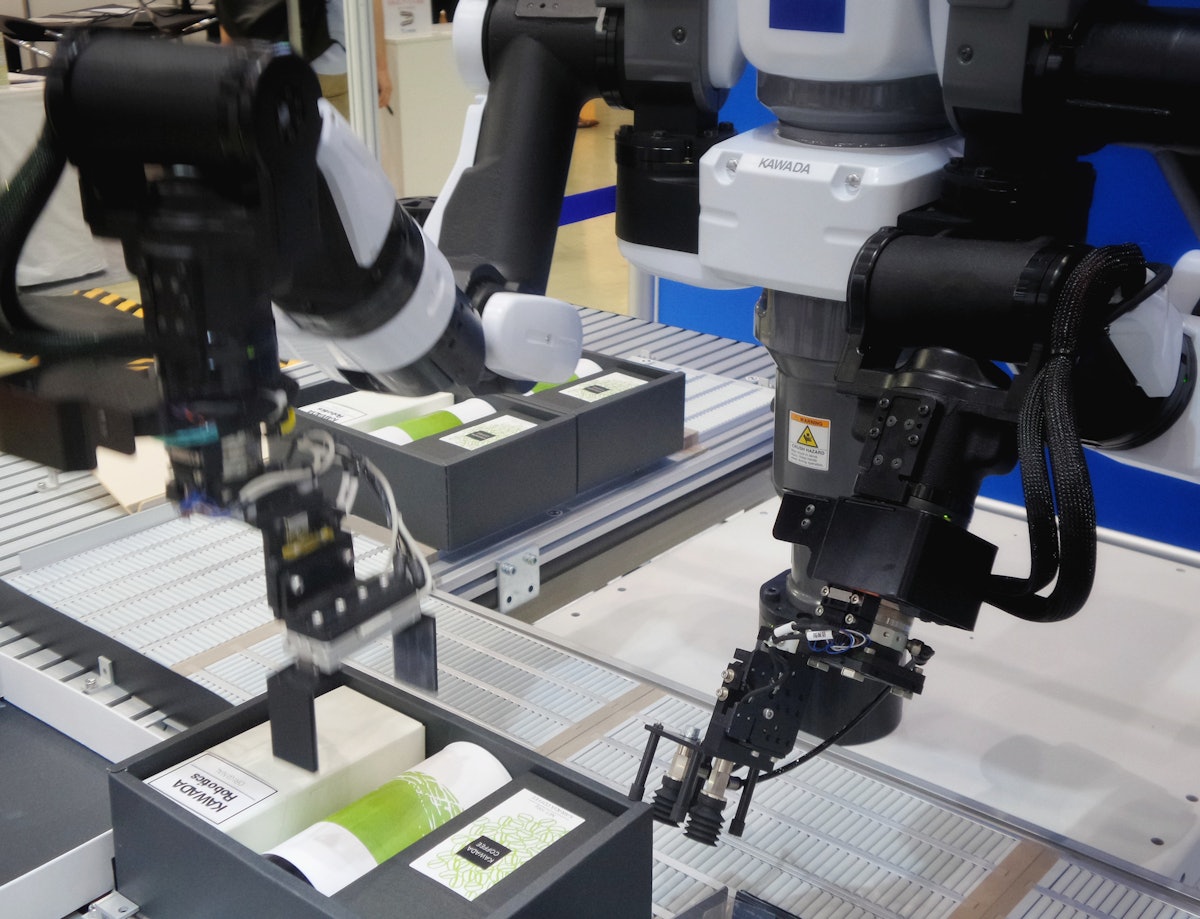## From Tetris to Tech Titans: Why Logistics Collaboration is the Next Level in Supply Chain Domination
Remember Tetris? The classic game where falling blocks threatened to overwhelm your carefully constructed tower? Well, the modern supply chain can feel a lot like that. Constrained by fluctuating demand, unpredictable disruptions, and mountains of data, it’s a constant balancing act.

But what if, instead of playing solo, you had a team of tech-powered allies? Imagine a world where communication flows seamlessly, information is shared instantly, and every player has a clear view of the entire board. That’s the future of logistics, and it’s powered by technology collaboration.

Laying a Solid Foundation: Data Governance and Accuracy as Cornerstones

The foundation of any successful digital transformation journey in logistics lies in robust data governance and accuracy. As technology increasingly drives supply chain decisions, the quality and reliability of data become paramount. Without a clear understanding of data sources, ownership, and accuracy, even the most sophisticated technologies can yield misleading results.
Many companies rush into implementing advanced technologies without first establishing a strong data foundation. This often leads to challenges in data integration, consistency, and ultimately, the effectiveness of the implemented solutions. A pitfall to avoid is assuming all data is created equal. Data from different sources may have varying formats, levels of accuracy, and levels of relevance. A holistic view of data quality is essential.
A well-defined data governance framework is crucial for ensuring data accuracy and consistency. This framework should encompass:
- Data Identification: Clearly defining what data is critical to the supply chain operations.
- Data Ownership: Assigning responsibility for data accuracy and maintenance to specific individuals or teams.
- Data Access Control: Implementing measures to ensure that only authorized personnel have access to sensitive data.
- Data Quality Standards: Establishing clear criteria for data accuracy, completeness, and timeliness.
- Data Security: Implementing measures to protect data from unauthorized access, use, or disclosure.
- Amazon’s use of AI-powered robots in its warehouses to automate tasks and improve efficiency.
- Walmart’s use of AI to predict demand and optimize inventory levels.
- UPS’s use of AI to optimize delivery routes and schedules.
- Warehouse Management Systems (WMS) that provide real-time visibility into inventory levels and optimize warehouse operations.
- Transportation Management Systems (TMS) that optimize routes, schedules, and carrier selection.
- Supply Chain Planning Systems that leverage AI and ML to forecast demand, optimize inventory, and plan production.
Choosing the right data governance framework can be a complex task, but understanding the specific needs of the organization is paramount. Frameworks like the DAMA Data Governance Institute’s DMBOK2 and the Data Management Association’s (DAMA) Data Governance framework provide valuable guidance and best practices.

Predictive Power: Harnessing AI and ML for Proactive Supply Chain Management
The power of artificial intelligence (AI) and machine learning (ML) is transforming the logistics industry, enabling companies to move from reactive to proactive supply chain management. By analyzing vast amounts of data, AI and ML algorithms can identify patterns, predict future trends, and optimize operations in real-time.
One of the key benefits of AI and ML in supply chain management is improved demand forecasting. By analyzing historical sales data, market trends, and external factors such as weather patterns and economic indicators, AI algorithms can generate more accurate demand forecasts. This enables companies to optimize inventory levels, reduce stockouts, and minimize carrying costs.
AI and ML can also be used to optimize transportation routes and schedules. By considering factors such as traffic conditions, fuel prices, and delivery deadlines, AI algorithms can identify the most efficient routes and schedules, reducing transportation costs and delivery times.
Another application of AI and ML in logistics is warehouse automation. AI-powered robots can be used to automate tasks such as picking, packing, and sorting, improving warehouse efficiency and reducing labor costs.
Real-world examples of AI and ML in logistics include:
As AI and ML technologies continue to advance, we can expect to see even more innovative applications in the logistics industry. These technologies have the potential to revolutionize supply chain management, making it more efficient, resilient, and responsive to changing demands.
Cloud Computing: Unlocking Scalability and Agility
Cloud computing is playing a pivotal role in enabling the digital transformation of logistics. By migrating data, applications, and infrastructure to the cloud, companies can gain access to a range of benefits, including increased scalability, agility, and cost-efficiency.
Scalability refers to the ability of a system to handle increasing workloads and data volumes. Cloud computing provides on-demand resources, allowing companies to scale their IT infrastructure up or down as needed. This is particularly important for logistics companies, which often experience seasonal fluctuations in demand.
Agility refers to the ability of a system to adapt quickly to changing conditions. Cloud computing enables companies to deploy new applications and services quickly and easily, allowing them to respond to market changes and customer demands in real-time.
Cost-efficiency is another key benefit of cloud computing. By paying for only the resources they use, companies can avoid the upfront costs of hardware and software investments. Cloud providers also typically handle the maintenance and security of the infrastructure, freeing up IT staff to focus on more strategic initiatives.
Cloud computing is also essential for enabling the use of AI and ML in logistics. These technologies require significant computational power, which can be expensive to provide on-premises. Cloud platforms provide the necessary infrastructure and resources for running AI and ML models at scale.
Examples of cloud-based solutions being used in logistics include:
As cloud computing technologies continue to evolve, we can expect to see even more innovative applications in the logistics industry, further driving the digital transformation of supply chains.
Leveling Up Your Game: Partnerships and Innovations
The pace of technological advancements in the logistics sector is accelerating, requiring companies to embrace collaboration and innovation to stay ahead. Strategic alliances, partnerships, and the adoption of cutting-edge technologies are crucial for companies to optimize their operations, enhance efficiency, and gain a competitive edge.
The Power of Collaboration: How Strategic Alliances Drive Results
Strategic alliances between logistics companies, technology providers, and other stakeholders are becoming increasingly common. These partnerships allow companies to leverage each other’s strengths, share resources, and accelerate innovation. By collaborating, companies can access new technologies, expand their reach, and gain valuable insights into industry trends.
For example, a logistics company might partner with a technology provider to develop a new AI-powered platform for optimizing transportation routes. This collaboration would allow the logistics company to benefit from the technology provider’s expertise in AI and ML, while the technology provider would gain access to real-world data and customer insights from the logistics company.
Game-Changing Technologies: Exploring the Potential of AMRs and Beyond
Autonomous Mobile Robots (AMRs) are transforming warehouse operations by automating tasks such as picking, packing, and sorting. AMRs can operate independently, navigate complex environments, and work collaboratively with human workers. This technology is improving efficiency, reducing labor costs, and enhancing safety in warehouses.
Beyond AMRs, other game-changing technologies are emerging in the logistics industry:
- Drone Delivery: Drones are being used for last-mile delivery, offering faster and more efficient delivery options, particularly in remote areas.
- Blockchain Technology: Blockchain can enhance supply chain transparency and security by providing an immutable record of transactions and product provenance.
- Internet of Things (IoT): IoT sensors can be used to track goods in real-time, monitor conditions, and optimize logistics operations.
These technologies are poised to revolutionize the logistics industry, creating new opportunities for efficiency, cost reduction, and customer satisfaction.
Real-World Success: Case Studies of Companies Winning with Tech Collaboration
Numerous case studies demonstrate the success of companies that have embraced technology collaboration and innovation in logistics. One prominent example is the partnership between Geek+ and Körber.
Geek+, a leading provider of autonomous mobile robots (AMRs), and Körber, a global leader in supply chain software and automation, have joined forces to deliver comprehensive AMR solutions to businesses worldwide. This strategic alliance combines Geek+’s expertise in robotics with Körber’s strengths in integration, advisory, and maintenance, creating a powerful synergy that addresses the growing complexities of modern supply chains.
The partnership allows Körber to expand its offerings with cutting-edge AMR technology, while Geek+ gains access to Körber’s global customer base and extensive industry expertise. Together, they are empowering businesses to optimize their warehouse operations, improve efficiency, and enhance their overall supply chain resilience.
The success of this partnership underscores the importance of collaboration in driving innovation and achieving transformative results in the logistics industry.
Conclusion
Collaboration in logistics isn’t just a nice-to-have; it’s a necessity for navigating the increasingly complex and volatile global supply chain. As we’ve explored, embracing technology-driven collaboration offers a transformative path to success, fueled by data transparency, process optimization, and resilience against disruptions. From streamlining communication and inventory management to enhancing forecasting accuracy and customer satisfaction, the benefits are undeniable.
